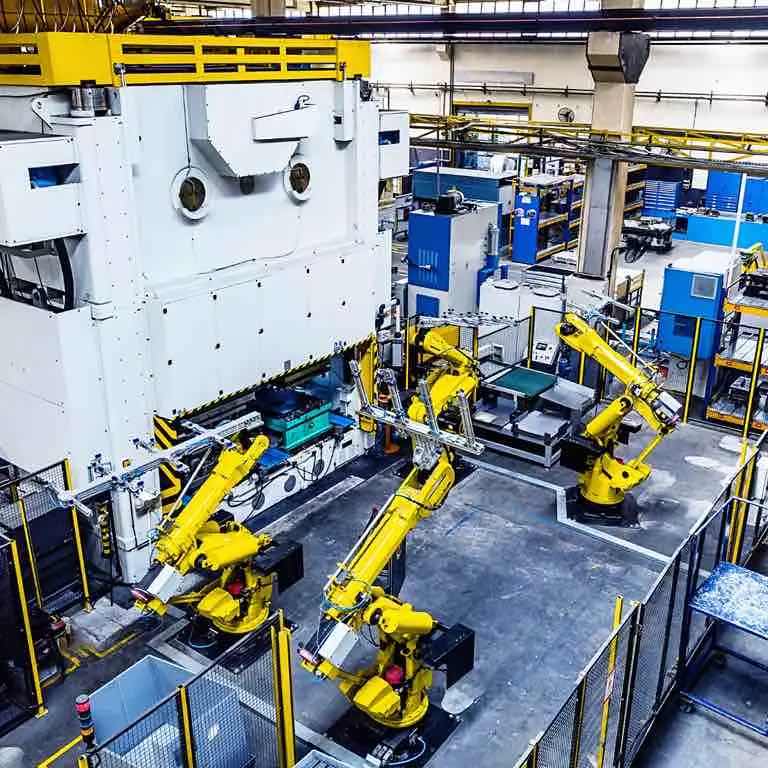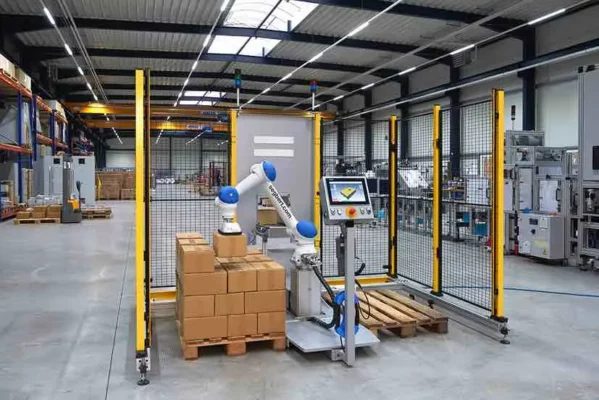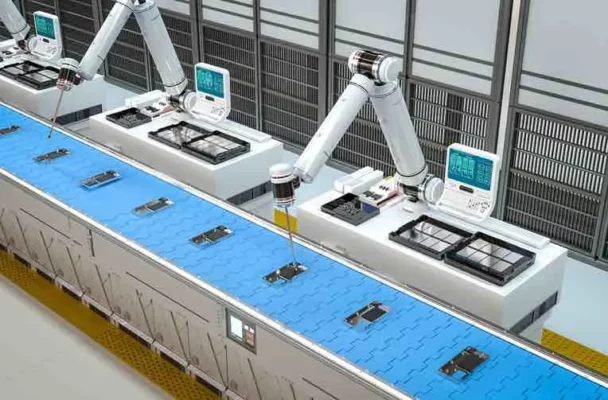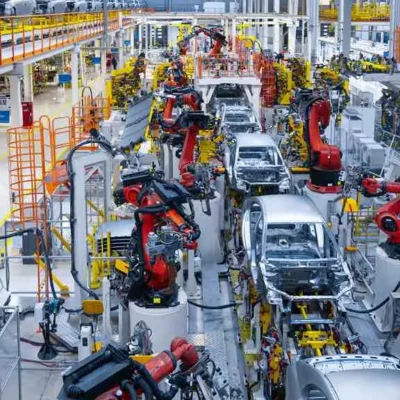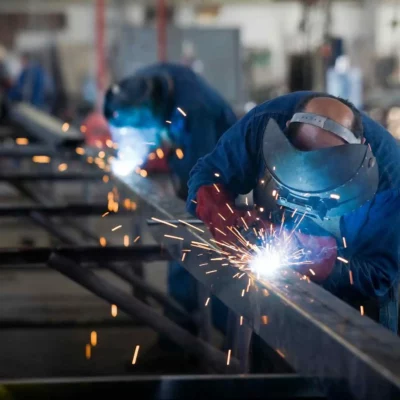Stepping into the world of industrial robots can transform your manufacturing line, making it faster and more efficient. However, diving into this innovation comes with its set of hurdles. You might wonder about the fit with your current setup, the cost, and how to keep everything running smoothly.
Don’t worry, you’re not alone. Every project engineer faces these challenges. This article breaks down the top five implementation challenges and offers practical solutions. Whether it’s integrating robots with old systems, training your team, or ensuring safety, we’ve got you covered.
Let’s navigate these challenges together and make your automation journey a success.
What is an Industrial (Articulated) Robot?
An industrial articulated robot is a game-changer in the world of manufacturing and assembly lines. Think of it as a highly flexible arm that can bend, rotate, and move in ways that mimic human action. With multiple joints – usually four to six – it can reach into tight spaces, lift heavy items, and perform tasks with precision that’s hard for human hands to match.
You might be wondering, “What makes it stand out?” Well, its versatility is key. Whether you’re dealing with welding, painting, picking up parts, or assembling gadgets, this robot can adapt to almost any task. It’s capable of switching jobs without breaking a sweat.
For you, this means not just speed and efficiency but also a leap in quality. An articulated robot doesn’t tire or make errors from fatigue, ensuring consistent output round the clock. Its introduction to your line could dramatically boost productivity, making it a smart investment for those looking to stay ahead in the competitive industrial landscape.
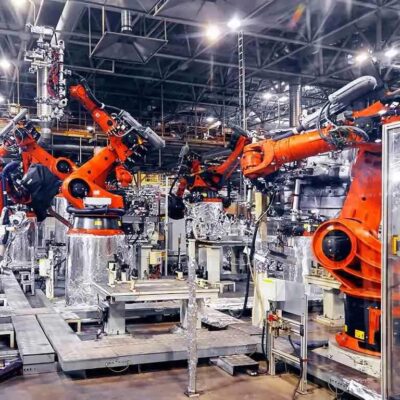
5 Implementation Challenges with Industrial Robots:
1. Integration with Existing Systems:
Integrating new robots into your existing production setup is crucial but can be tricky. Your main challenge is ensuring these robots work smoothly with your current machinery and software systems. Here’s how you can tackle this:
First, focus on robots with adaptable software interfaces. These interfaces allow your new robots to communicate effectively with older equipment, ensuring a seamless integration.
If you’re not deeply familiar with the technical details, consider getting help from expert integration services. These professionals can bridge the gap between your new robots and existing systems, customizing solutions to fit your specific needs without disrupting your production flow.
Also, prioritize robots known for their flexibility. Robots that easily adapt to different tasks and environments without requiring significant changes to your current setup are invaluable. They not only save you time and resources but also future-proof your production line against evolving demands.
By addressing these aspects, you’re better positioned to integrate new robotic technology effectively, keeping your production efficient and competitive.
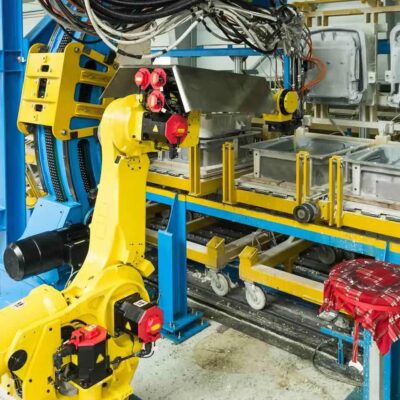
2. Skilled Workforce Shortage:
Facing a skilled workforce shortage is a common hurdle when implementing industrial robots. You need people who can operate, maintain, and troubleshoot these advanced machines. Here’s how to navigate this challenge:
Invest in training for your current team. It’s cost-effective and boosts morale. By upgrading their skills, your employees can handle new technologies, reducing the gap between your team’s capabilities and the demands of modern automation.
Consider partnerships with educational institutions. These alliances can ensure a steady stream of skilled graduates ready to work with your robotic systems. It’s a long-term strategy that benefits both your company and the future workforce.
Explore user-friendly robot designs. Some robots are designed to be intuitive, lowering the barrier for entry. Look for systems that require less specialized knowledge to operate. This approach can widen your pool of potential employees who can effectively work with your robots.
Remember, addressing the skilled workforce shortage is not just about finding the right people; it’s about creating an environment where continuous learning and adaptation are part of your company culture. By focusing on training, partnerships, and selecting accessible technology, you’re building a resilient, future-proof team.

3. Cost & Investments:
Addressing the cost and justifying the investment in industrial robots is a significant step for your manufacturing line. High upfront costs can seem daunting, but the long-term benefits often outweigh these initial expenses. Here’s how to approach this:
Start with a thorough cost-benefit analysis. Break down the expenses involved in purchasing, installing, and maintaining the robots against the savings in labor costs, increased productivity, and improved quality. This analysis gives you a clearer picture of when you can expect to see a return on your investment.
Consider financing and leasing options. These can spread out the cost, making it easier to manage your cash flow. Some suppliers offer flexible payment plans tailored to businesses looking to adopt automation without the hefty initial outlay.
Pilot projects are a practical way to demonstrate value. Begin with a single robotic system in a specific area of your production line. Monitor its impact on efficiency, cost savings, and product quality. Success in this pilot can provide a compelling argument for wider implementation and investment.
Remember, the goal is not just to cut costs but to enhance your competitive edge with increased efficiency and superior product quality. By carefully planning your investment, exploring financing options, and starting with pilot projects, you can build a strong case for the value of industrial robots in your operation.
4. Safety & Compliance:
Ensuring safety and compliance when integrating industrial robots into your production line is super important. This isn’t just about following rules; it’s about protecting your team. Here’s how to make sure you’re on the right track:
Firstly, familiarize yourself with the safety standards specific to your industry and region. These regulations are in place to prevent accidents and ensure a safe working environment. Knowing them inside out is your first step.
Invest in robots equipped with advanced safety features. Look for systems that include emergency stop buttons, speed and force limitations, and sensors that detect human presence. These features help prevent accidents and reduce the risk of injury.
Training your staff on safety protocols cannot be overstressed. Everyone working around the robots should understand how they operate, the potential risks, and how to avoid them. Regular training sessions keep safety front and center in your employees’ minds.
Consider a safety audit conducted by an external expert. This can help identify any gaps in your safety measures and compliance. Getting an outside perspective ensures that you’re not overlooking any potential issues.
Lastly, keep safety documentation up to date. This includes operating manuals, emergency procedures, and maintenance records. Having this information readily available supports a culture of safety and compliance.

5. Technical Challenges & Maintenance:
Navigating technical challenges and maintaining your industrial robots are key to avoiding downtime and ensuring continuous productivity. Here’s how to tackle these aspects effectively:
First, anticipate compatibility issues. Ensure your new robots can communicate with your existing systems. This might mean software updates or investing in middleware that helps different technologies work together seamlessly.
Stay on top of software updates. Just like with your smartphone or computer, keeping your robots’ software up to date is crucial. These updates can fix bugs, improve efficiency, and add new features.
Establish a preventive maintenance schedule. Regular checks and maintenance can prevent small issues from becoming big problems. This includes tasks like lubricating moving parts, checking for wear and tear, and updating software.
Have a plan for technical support. Know who to call when things go wrong. Whether it’s the robot manufacturer’s support line or a third-party technician, having expert help at the ready can minimize downtime.
Stock up on spare parts. Having critical components on hand means you can quickly replace parts without waiting for shipments. This is especially important for parts that wear out regularly or are critical to the robot’s operation.
Do you want to add new robots to your operations? Are you facing workforce challenges or need to justify your investment? Are you focused on safety and compliance or dealing with technical issues? Visit Match.Qviro.com to discover the perfect match for your manufacturing needs. Start your journey to a more efficient and competitive future with us today.
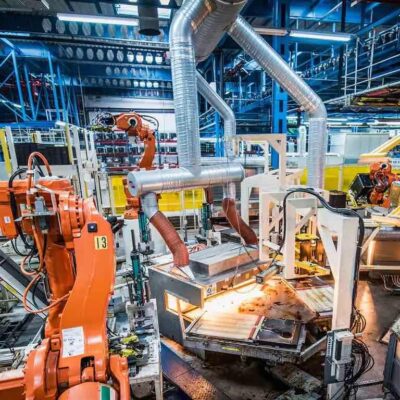
Conclusion:
Tackling the challenges of adding industrial robots to your line boosts efficiency and keeps you ahead in the market. Focus on integration, training your team, managing costs, ensuring safety, and regular maintenance. This way, you make your operations smoother and safer. Every step forward in solving these issues moves you closer to a more efficient and reliable production setup. Embrace automation confidently, ready to face and overcome any hurdles.
Do you want to compare different Industrial Robots?
Join our community to connect with experts and get support on overcoming industrial robot implementation challenges! Click here to join!
